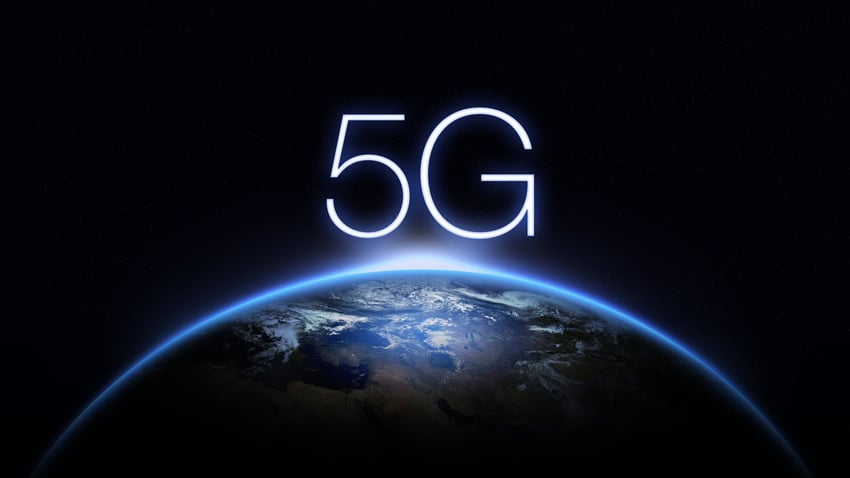U.S. military sees great potential in space based 5G (which has yet to be standardized)
Some analyst say that space-based 5G (which has yet to be standardized) will enable enhanced service to cities but also connects remote regions, including areas without traditional mobile service, ships off-shore, through natural disasters and in contested battlefields. Features of 5G from Space might include: connecting massive numbers of Internet of Things (IoT) sensors and devices.
From a March 14, 2023 Congressional Research Service In Focus report, National Security Implications of 5G Mobile Technologies:
5G mobile technologies will increase the speed of data transfer and improve bandwidth over existing fourth generation (4G) technologies, in turn enabling new military and commercial applications. 5G technologies are expected to support interconnected or autonomous devices, such as smart homes, self-driving vehicles, precision agriculture systems, industrial machinery, and advanced robotics. 5G for the military could additionally improve intelligence, surveillance, and reconnaissance (ISR) systems and processing; enable new methods of command and control (C2); and streamline logistics systems for increased efficiency, among other uses. As 5G technologies are developed and deployed, Congress may consider policies for spectrum management and national security, as well as implications for U.S. military operations.
U.S. military leaders are telling the wireless and satellite industries they see great potential in 5G, and they’re asking for standards, open interfaces and simple devices.
“I am excited to see what the next couple of years will bring,” said Brigadier General Steve Butow, space portfolio director at the U.S. Defense Innovation Unit. “It is important to take advantage of technologies produced at scale.” Butow joined Colonel Joseph Roberts, assistant program executive officer, PEO C3T, U.S. Army, on a panel at SATELLITE 2023 entitled “The Role of Space-Based 5G in Military Communications.” Executives from defense contractor Lockheed Martin and satellite giant Hughes were also on the panel.
Roberts said space-based 5G can be a “game changer” because it creates “the opportunity to connect every soldier on the battlefield.” Butow encouraged the wireless industry to “migrate to open architectures.” He said that if the industry adopts open interfaces it will “create an environment where we can do lots of business with you.”

Source: Getty Images
At least one satellite operator is also advocating for open interfaces for the wireless infrastructure industry. Open RAN is a top priority for HughesNet® in its work with Dish Network, explained Rick Lober, VP and GM at Hughes’ government and defense division. “We are pushing that very hard,” he said, adding “I’m not sure everyone is on board.”
Lober added that he hopes users of network infrastructure will take full advantage of open RAN by working with a diverse set of vendors. “If you are going to have a program that is about open standards, do not award it to one company,” he said.
Dawna Morningstar, director, next generation solutions at Lockheed Martin, said industry standards are “the critical underpinning” that enables interoperability and scalability. She said Lockheed Martin is actively engaged with wireless industry standards boards. She highlighted 3GPP Release 17’s (not a standard) inclusion of interoperability with non-terrestrial networks. “We can now have these open solutions for air and space that can integrate seamlessly with the terrestrial networks,” she said. “We can get the intelligence down where it needs to be, and back up and distributed.”
Verizon’s Cory Davis, AVP Public Safety at Frontline, said the military is interested in portable 5G private network solutions. Verizon’s Tactical Humanitarian Operations Response (THOR) 5G on wheels has the capabilities the military wants, Davis said, but the form factor is too big for some use cases. “They want to put THOR in a backpack and take it to the desert,” Davis said.
References:
https://www.lockheedmartin.com/5gfromspace
https://www.fiercewireless.com/tech/ericsson-qualcomm-test-space-based-5g-thales


